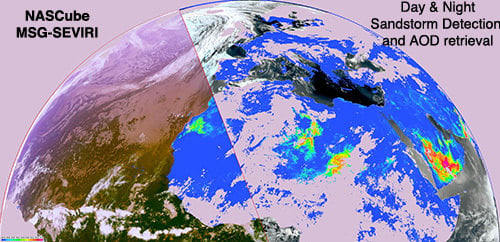North Africa and Saudi Arabia Day/Night Sandstorm Survey (NASCube)
Abstract
:1. Introduction
2. Methodology
2.1. Generation of a SEVIRI Image in Pseudo Color
2.1.1. Daytime SEVIRI Image
2.1.2. Night SEVIRI Image
2.2. Aerosols Detection and AOD Estimation
2.2.1. Introduction
2.2.2. Thermal Anomaly Detection
- (a)
- Empirically, and after several trials and errors, it was chosen to divide the year into eight periods of approximately 40 days and to separate day and night cases over ocean (2) and land (2).
- (b)
- As a result, a cloud of 40 × 2 × 2 ANNs was computed. All ANNs take seven input data, and are built with two hidden layers with 10 nodes each, and lead to one cloudy flag output 0 or 1.
2.2.3. SAA Examples
2.2.4. Validation of the Pseudo-Color Construction and NASCube Sandstorm Detection
2.2.5. AOD Retrieval Method
2.2.6. Validation of AOD Retrieval Method
3. Results and Discussion
3.1. Data Description
3.2. Selection of Data For The Comparison of AOD Values (NASCube, AERONET, Deep Blue)
- (1)
- Selecting over six years, from 2007 to 2012, of AERONET AOD measurements for several wavelengths (0.675, 0.500, 0.440 μm), from 10 sites geolocalized in Figure 7.
- (2)
- Over the same time period, we extract the corresponding pixel over land from the Deep Blue MYD04L2 NASA PRODUCT the AOD at 0.550 μm.
- (3)
- Time and space (±1 pixel around the AERONET site) synchronized NASCube retrievals (0.675, 0.500, 0.440 μm).
3.3. Validation of AOD Retrievals with Respect to AERONET and Deep Blue in Daytime
3.4. Validation of AOD Retrievals in Nighttime
4. Conclusions, Perspectives and the NASCube Website
Acknowledgments
Author Contributions
Conflicts of Interest
References
- Climate Change 2013: The Physical Science Basis. In Working Group I Contribution to the Fifth Assessment Report of the Intergovernmental Panel on Climate Change (IPCC), Final Draft Underlying Scientific-Technical Assessment; Cambridge University Press: Cambridge, UK; New York, NY, USA, 2013.
- Miller, R.L.; Tegen, I. Climate response to soil dust aerosols. J. Clim. 1998, 11, 3247–3267. [Google Scholar] [CrossRef]
- Levin, Z.; Ganor, E.; Gladstein, V. The effects of desert particles coated with sulfate on rain formation in the eastern Mediterranean. J. Appl. Meteorol. 1996, 35, 1511–1523. [Google Scholar] [CrossRef]
- McFiggans, G.; Artaxo, P.; Baltensperger, U.; Coe, H.; Facchini, M.; Feingold, G.; Fuzzi, S.; Gysel, M.; Laaksonen, A.; Lohmann, U. The effect of physical and chemical aerosol properties on warm cloud droplet activation. Atmos. Chem. Phys. 2006, 6, 2593–2649. [Google Scholar] [CrossRef]
- Mahowald, N.M.; Kiehl, L.M. Mineral aerosol and cloud interactions. Geophys. Res. Lett. 2003, 30, 1475. [Google Scholar] [CrossRef]
- Lee, S.S.; Penner, J.E. Aerosol effects on ice clouds: Can the traditional concept of aerosol indirect effects be applied to aerosol-cloud interactions in cirrus clouds? Atmos. Chem. Phys. 2010, 10, 10345–10358. [Google Scholar] [CrossRef] [Green Version]
- Cuesta, J.; Marsham, J.H.; Parker, D.J.; Flamant, C. Dynamical mechanisms controlling the vertical redistribution of dust and the thermodynamic structure of the west Saharan atmospheric boundary layer during summer. Atmos. Sci. Lett. 2009, 10, 34–42. [Google Scholar] [CrossRef]
- Washington, R.; Todd, M.C.; Engelstaedter, S.; Mbainayel, S.; Mitchell, F. Dust and the low-level circulation over the Bodélé depression, Chad: Observations from BoDEx 2005. J. Geophys. Res. 2006, 111, d03201. [Google Scholar] [CrossRef]
- Slingo, A.; Ackerman, T.P.; Allan, R.P.; Kassianov, E.I.; McFarlane, S.A.; Robinson, G.J.; Barnard, J.C.; Miller, M.A.; Harries, J.E.; Russell, J.E.; et al. Observations of the impact of a major Saharan dust storm on the atmospheric radiation balance. Geophys. Res. Lett. 2006, 33, l24817. [Google Scholar] [CrossRef]
- NASA Website. NASA Satellite Reveals How Much Saharan Dust Feeds Amazon’s Plants. Available online: https://www.nasa.gov/content/goddard/nasa-satellite-reveals-how-much-Saharan-dust-feeds-amazon-s-plants (accessed on 22 February 2015).
- Herrmann, L.; Jahn, R.; Maurer, T. Mineral dust around the Sahara—From source to sink. A review with emphasis on contributions of the German soil science community in the last twenty years. J. Plant Nutr. Soil Sci. 2010, 173, 811–821. [Google Scholar] [CrossRef]
- Sokolik, I.N.; Toon, O.B. Incorporation of mineralogical composition into models of the radiative properties of mineral aerosol from UV to IR wavelengths. J. Geophys. Res. 1999, 104, 9423–9444. [Google Scholar] [CrossRef]
- Alfaro, S.C.; Lafon, S.; Rajot, J.L.; Formenti, P.; Gaudichet, A.; Maillé, M. Iron oxides and light absorption by pure desert dust: An experimental study. J. Geophys. Res. 2004, 109, d08208. [Google Scholar] [CrossRef]
- Falkowski, P.G.; Barber, R.T.; Smetacek, V. Biogeochemical controls and feedbacks on ocean primary production. Science 1998, 281, 200–206. [Google Scholar] [CrossRef] [PubMed]
- Jickells, T.D.; An, Z.S.; Andersen, K.K.; Baker, A.R.; Bergametti, G.; Brooks, N.; Cao, J.J.; Boyd, P.W.; Duce, R.A.; Hunter, K.A.; et al. Global iron connections between desert dust, ocean biogeochemistry, and climate. Science 2005, 308, 67–71. [Google Scholar] [CrossRef] [PubMed]
- Mahowald, N.M.; Baker, A.R.; Bergametti, G.; Brooks, N.; Duce, R.A.; Jickells, T.D.; Kubilay, N.; Prospero, J.M.; Tegen, I. Atmospheric global dust cycle and iron inputs to the ocean. Glob. Biogeochem. Cycles 2005, 19, gB4025. [Google Scholar] [CrossRef]
- Koren, I.; Kaufman, Y.J.; Washington, R.; Todd, M.C.; Rudich, Y.; Martins, J.V.; Rosenfeld, D. The bodélé depression: A single spot in the Sahara that provides most of the mineral dust to the amazon forest. Environ. Res. Lett. 2006, 1, 014005. [Google Scholar] [CrossRef]
- Bristow, C.S.; Hudson-Edwards, K.A.; Chappell, A. Fertilizing the amazon and equatorial Atlantic with West African dust. Geophys. Res. Lett. 2010, 37, l14807. [Google Scholar] [CrossRef]
- Escudero, M.; Querol, X.; Pey, J.; Alastuey, A.; Pérez, N.; Ferreira, F.; Alonso, S.; Rodríguez, S.; Cuevas, E. A methodology for the quantification of the net African dust load in air quality monitoring networks. Atmos. Environ. 2007, 41, 5516–5524. [Google Scholar] [CrossRef]
- Gobbi, G.; Barnaba, F.; Ammannato, L. Estimating the impact of Saharan dust on the year 2001 pm10 record of Rome, Italy. Atmos. Environ. 2007, 41, 261–275. [Google Scholar] [CrossRef]
- AERONET Website. Available online: https://aeronet.gsfc.nasa.gov/ (accessed on 26 August 2017).
- Prospero, J.M.; Ginoux, P.; Torres, O.; Nicholson, S.E.; Gill, T.E. Environmental characterization of global sources of atmospheric soil dust identified with the nimbus 7 total ozone mapping spectrometer (toms) absorbing aerosol product. Rev. Geophys. 2002, 40, 2-1–2-31, 1002. [Google Scholar] [CrossRef]
- Washington, R.; Todd, M.; Middleton, N.J.; Goudie, A.S. Dust-storm source areas determined by the Total Ozone Monitoring Spectrometer and surface observations. Ann. Assoc. Am. Geogr. 2003, 93, 297–313. [Google Scholar] [CrossRef]
- Schepanski, K.; Tegen, I.; Laurent, B.; Heinold, B.; Macke, A. A new Saharan dust source activation frequency map derived from MSG-SEVIRI IR-channels. Geophys. Res. Lett. 2007, 34, l18803. [Google Scholar] [CrossRef]
- Ginoux, P.; Prospero, J.M.; Gill, T.E.; Hsu, N.C.; Zhao, M. Global-scale attribution of anthropogenic and natural dust sources and their emission rates based on MODIS deep blue aerosol products. Rev. Geophys. 2012, 50, rG3005. [Google Scholar] [CrossRef]
- Knippertz, P.; Todd, M.C. The central west Saharan dust hot spot and its relation to African easterly waves and extratropical disturbances. J. Geophys. Res. 2010, 115, d12117. [Google Scholar] [CrossRef]
- Hsu, N.C.; Tsay, S.-C.; King, M.D.; Herman, J.R. Aerosol properties over bright-reflecting source regions. IEEE Trans. Geosci. Remote Sens. 2004, 42, 557–569. [Google Scholar] [CrossRef]
- Deep Blue NASA Website. Available online: https://deepblue.gsfc.nasa.gov/ (accessed on 26 August 2017).
- Schepanski, K.; Tegen, I.; Todd, M.C.; Heinold, B.; Bönisch, G.; Laurent, B.; Macke, A. Meteorological processes forcing Saharan dust emission inferred from MSG-SEVIRI observations of subdaily dust source activation and numerical models. J. Geophys. Res. 2009, 114, d10201. [Google Scholar] [CrossRef]
- Ashpole, I.; Washington, R. An automated dust detection using SEVIRI: A multiyear climatology of summertime dustiness in the central and Western Sahara. J. Geophys. Res. 2012, 117, d08202. [Google Scholar] [CrossRef]
- Legrand, M.; Plana-Fattori, A.; N’doumé, C. Satellite detection of dust using the ir imagery of Meteosat: 1. Infrared difference dust index. J. Geophys. Res. 2001, 106, 18251–18274. [Google Scholar] [CrossRef]
- Klüser, L.; Schepanski, K. Remote sensing of mineral dust over land with MSG infrared channels: A new Bitemporal Mineral Dust Index. Remote Sens. Environ. 2009, 113, 1853–1867. [Google Scholar] [CrossRef] [Green Version]
- Sannazzaro, F.; Filizzola, C.; Marchese, F.; Corrado, R.; Mazzeo, G.; Paciello, R.; Pergola, N.; Tramutoli, V. Identification of dust outbreaks on infrared MSG-SEVIRI data by using a Robust Satellite Technique (RST). Acta Astronaut. 2014, 93, 64–70. [Google Scholar] [CrossRef]
- Murray, J.E.; Brindley, H.E.; Bryant, R.G.; Russell, J.E.; Jenkins, K.F.; Washington, R. Enhancing weak transient signals in SEVIRI false color imagery: Application to dust source detection in southern Africa. J. Geophys. Res. Atmos. 2016, 121, 10199–10219. [Google Scholar] [CrossRef]
- Marchese, F.; Sannazzaro, F.; Falconieri, A.; Filizzola, C.; Pergola, N.; Tramutoli, V. An Enhanced Satellite-Based Algorithm for Detecting and Tracking Dust Outbreaks by Means of SEVIRI Data. Remote Sens. 2017, 9, 537. [Google Scholar] [CrossRef]
- Brindley, H.E.; Ignatov, A. Retrieval of mineral aerosol optical depth and size information from Meteosat Second Generation SEVIRI solar reflectance bands. Remote Sens. Environ. 2006, 102, 344–363. [Google Scholar] [CrossRef]
- Romano, F.; Ricciardelli, E.; Cimini, D.; Di Paola, F.; Viggiano, M. Dust detection and optical depth retrival using MSG-SEVIRI data. Atmosphere 2013, 4, 35–47. [Google Scholar] [CrossRef]
- African Monsoon Multidisciplinary Analysis (AMMA) Experience Website. Available online: http://www.amma-international.org/ (accessed on 26 August 2017).
- Flamant, C.; Chaboureau, J.-P.; Parker, D.J.; Taylor, C.M.; Cammas, J.-P.; Bock, O.; Timouk, F.; Pelon, J. Airborne observations of the impact of a convective system on the planetary boundary layer thermodynamics and aerosol distribution in the inter-tropical discontinuity region of the West African Monsoon. Q. J. R. Meteorol. Soc. 2007, 133, 1175–1189. [Google Scholar] [CrossRef]
- DeSouza-Machado, S.G.; Strow, L.L.; Imbiriba, B.; McCann, K.; Hoff, R.M.; Hannon, S.E.; Martins, J.V.; Tanré, D.; Deuzé, J.L.; et al. Infrared retrievals of dust using airs: Comparisons of optical depths and heights derived for a North African dust storm to other collocated EOS A-Train and surface observations. J. Geophys. Res. 2010, 115, d15201. [Google Scholar] [CrossRef]
- Holben, B.; Eck, T.; Slutsker, I.; Tanré, D.; Buis, J.; Setzer, A.; Vermote, E.; Reagan, J.; Kaufman, Y.; Nakajima, T.; et al. AERONET—A federated instrument network and data archive for aerosol characterization. Remote Sens. Environ. 1998, 66, 1–16. [Google Scholar] [CrossRef]
- Schmetz, J.; Govaerts, Y.; Konig, M.; Lutz, H.J.; Ratier, A.; Tjemkes, S. A Short Introduction to METEOSAT Second Generation (MSG); CIRA, Colorado State Univ.: Fort Collins, CO, USA, 2005. [Google Scholar]
- Vermote, E.F.; Kotchenova, S.Y.; Tanré, D.; Deuzé, J.L.; Herman, M.; Roger, J.-C.; Morcrette, J.J. 6SV Code. Available online: http://6s.ltdri.org/2015 (accessed on 26 August 2017).
- Vermote, E.F.; Tanré, D.; Deuzé, J.L.; Herman, M.; Morcette, J.J. Second simulation of the satellite signal in the solar spectrum, 6s: An overview. IEEE Trans. Geosci. Remote Sens. 1997, 35, 675–686. [Google Scholar] [CrossRef]
- Shettle, E.P.; Kneizys, F.X.; Gallery, W.O. Suggested modification to the total volume molecular scattering coefficient in LOWTRAN: Comment. Appl. Opt. 1980, 19, 2873–2874. [Google Scholar] [CrossRef]
- Vermote, E.; Tanré, D. Analytical expressions for radiative properties of planar rayleigh scattering media, including polarization contributions. J. Quant. Spec-Trosc. Radiat. Transf. 1992, 47, 305–314. [Google Scholar] [CrossRef]
- Chandrasekhar, S. Radiative Transfer; Dover Publications, Inc.: New York, NY, USA, 2013. [Google Scholar]
- Joseph, J.H.; Wiscombe, W.J.; Weinman, J.A. The Delta-Eddington approximation for radiative flux transfer. J. Atmos. Sci. 1976, 33, 2452–2459. [Google Scholar] [CrossRef]
- Lenoble, J.; Herman, M.; Deuzé, J.; Lafrance, B.; Santer, R.; Tanré, D. A successive order of scattering code for solving the vector equation of transfer in the earth’s atmosphere with aerosols. J. Quant. Spectrosc. Radiat. Transf. 2007, 107, 479–507. [Google Scholar] [CrossRef]
- Zell, A.; Mache, N.; Huebner, R.; Mamier, G.; Vogt, M.; Schmalzl, M.; Herrmann, K.U. SNNS (Stuttgart Neural Network Simulator). In Neural Network Simulation Environments; Springer: Boston, MA, USA, 1994; pp. 165–186. [Google Scholar]
- Prata, A.J.; Grant, I.F. Retrieval of microphysical and morphological properties of volcanic ash plumes from satellite data: Application of Mountain Ruapehu, New Zealand. Q. J. R. Meteorol. Soc. 2000, 122, 1–999. [Google Scholar] [CrossRef]
- Lensky, I.M.; Rosenfeld, D. Clouds-Aerosols-Precipitation Satellite Analysis Tool (CAPSAT). Atmos. Chem. Phys. 2008, 8, 6739–6753. [Google Scholar] [CrossRef]
- Ackerman, S.A. Remote sensing aerosols using satellite infrared observations. J. Geophys. Res. 1997, 102, 17069–17079. [Google Scholar] [CrossRef]
- Eumetsat. Cloud Mask Factsheet; EUM/OPS/DOC/09/5164; Eumetsat: Darmstadt, Germany, 2010. [Google Scholar]
- Taravat, A.; Frate, F.D.; Cornaro, C.; Vergari, S. Neural networks and support vector machine algorithms for automatic cloud classification of whole-sky ground-based images. IEEE Geosci. Remote Sens. Lett. 2015, 12, 666–670. [Google Scholar] [CrossRef]
- Sayer, A.M.; Munchak, L.A.; Hsu, N.C.; Levy, R.C.; Bettenhausen, C.; Jeong, M.-J. MODIS Collection 6 aerosol products: Comparison between Aqua’s e-Deep Blue, Dark Target, and “merged” data sets, and usage recommendations. J. Geophys. Res. Atmos. 2014, 119, 13965–13989. [Google Scholar] [CrossRef]
- North African Sand Storm Survey NASCube Website. Available online: http://nascube.univ-lille1.fr/ (accessed on 26 August 2017).
- NASCube Acquisition Commands. Available online: http://nascube.univ-lille1.fr/Abonnt/getimage.html/ (accessed on 26 August 2017).
- NASCube Statistics. Available online: http://newtec.univ-lille1.fr/Movies/WEBSTATS/WS2017.html (accessed on 26 August 2017).
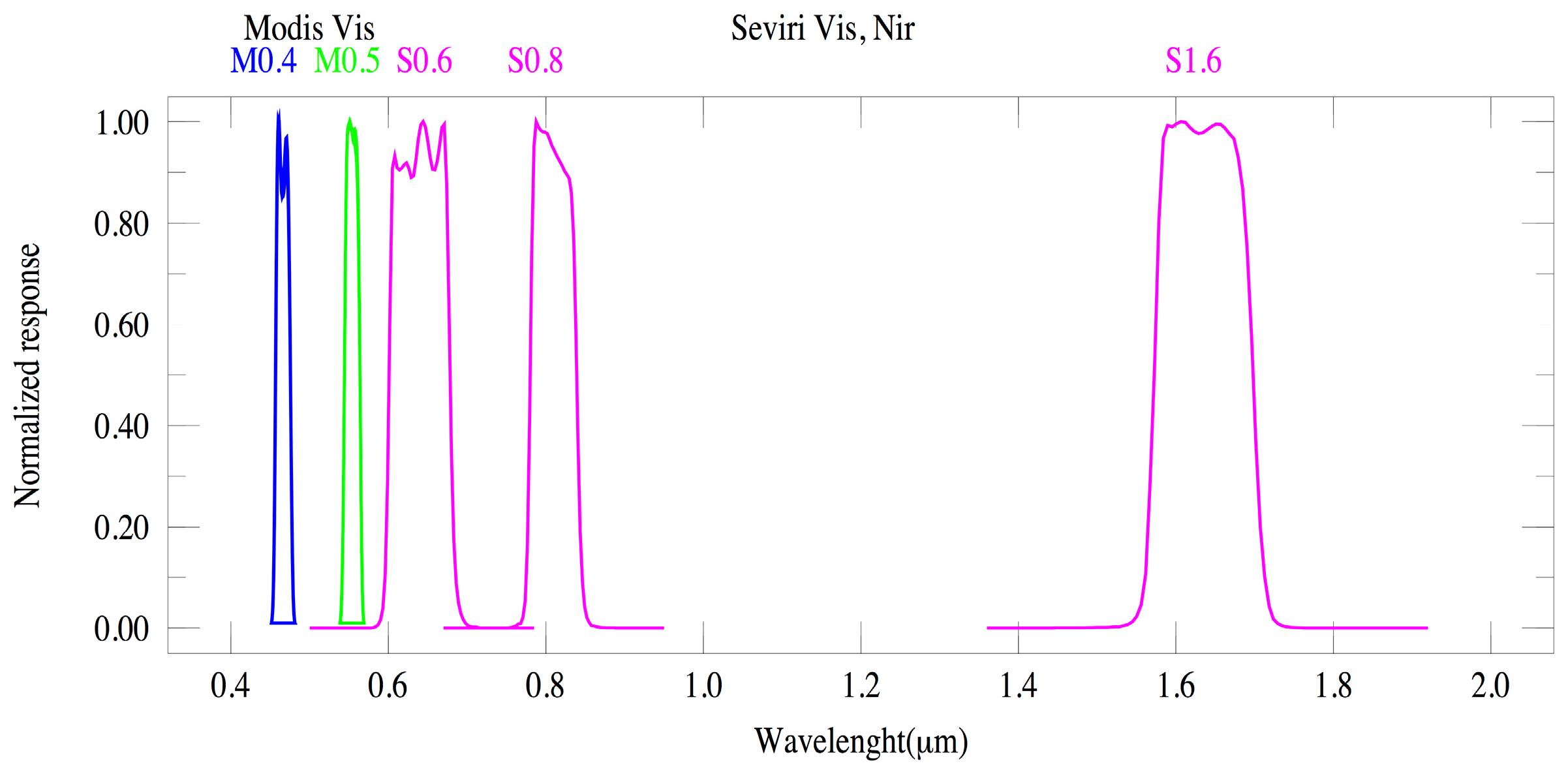
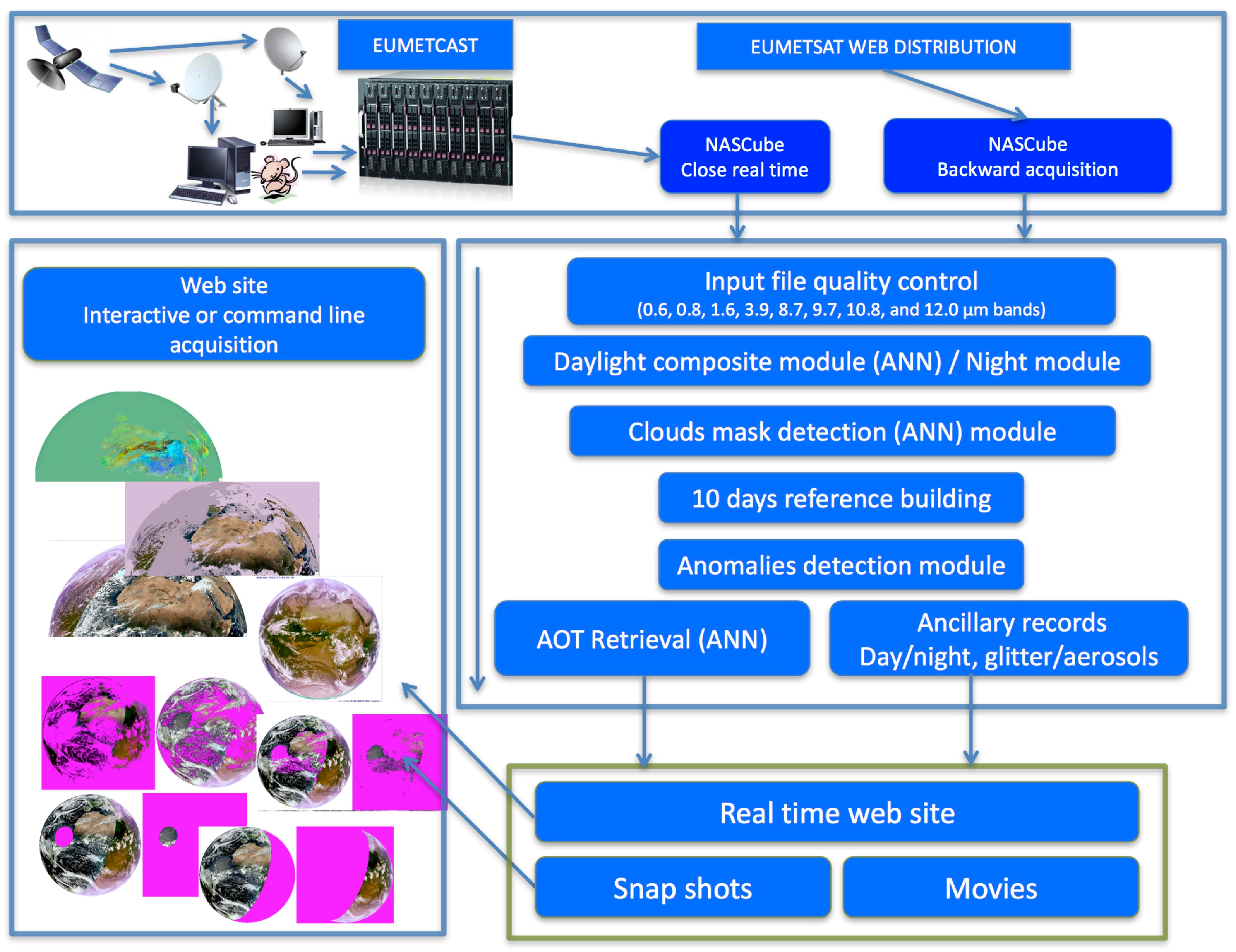
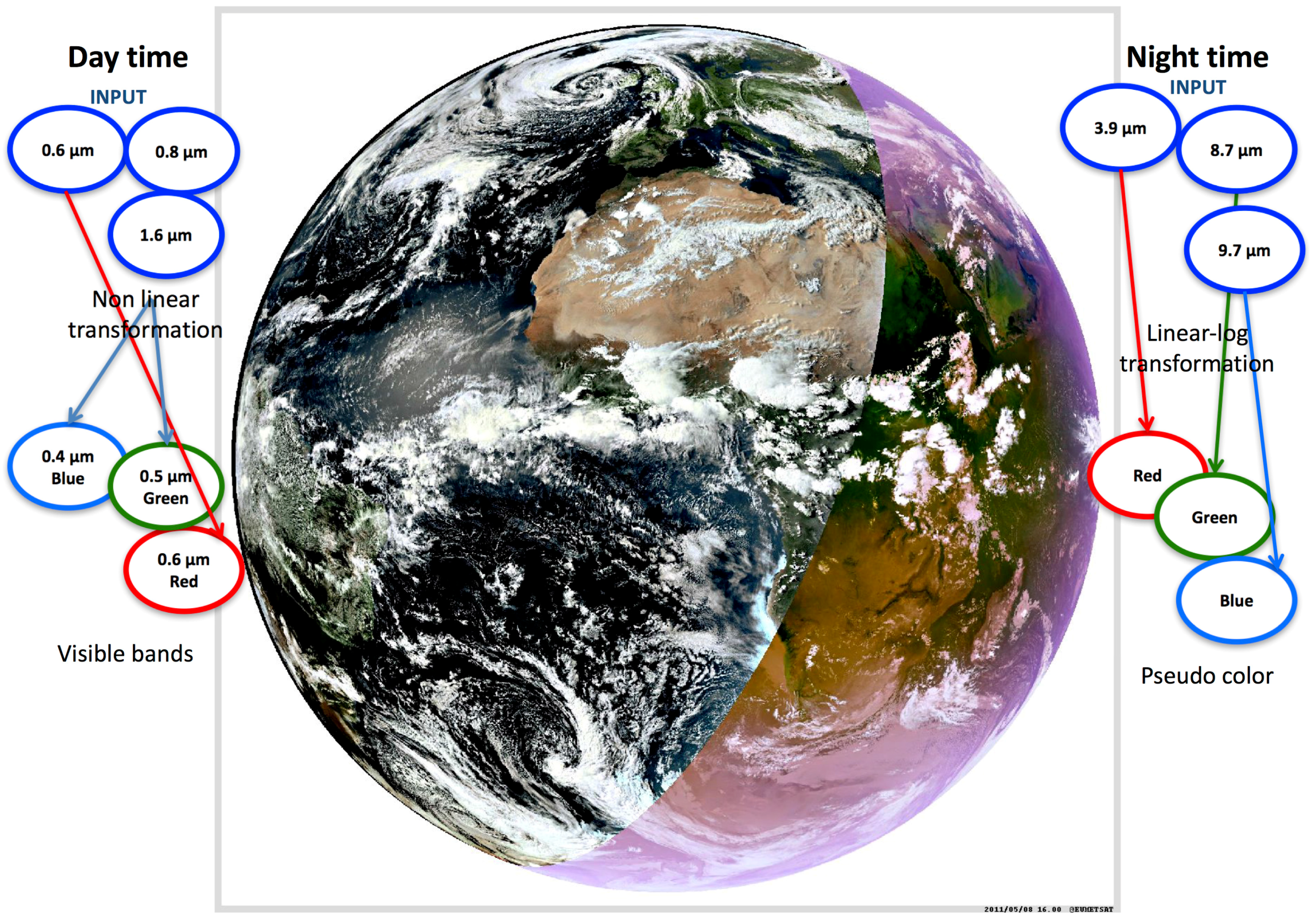
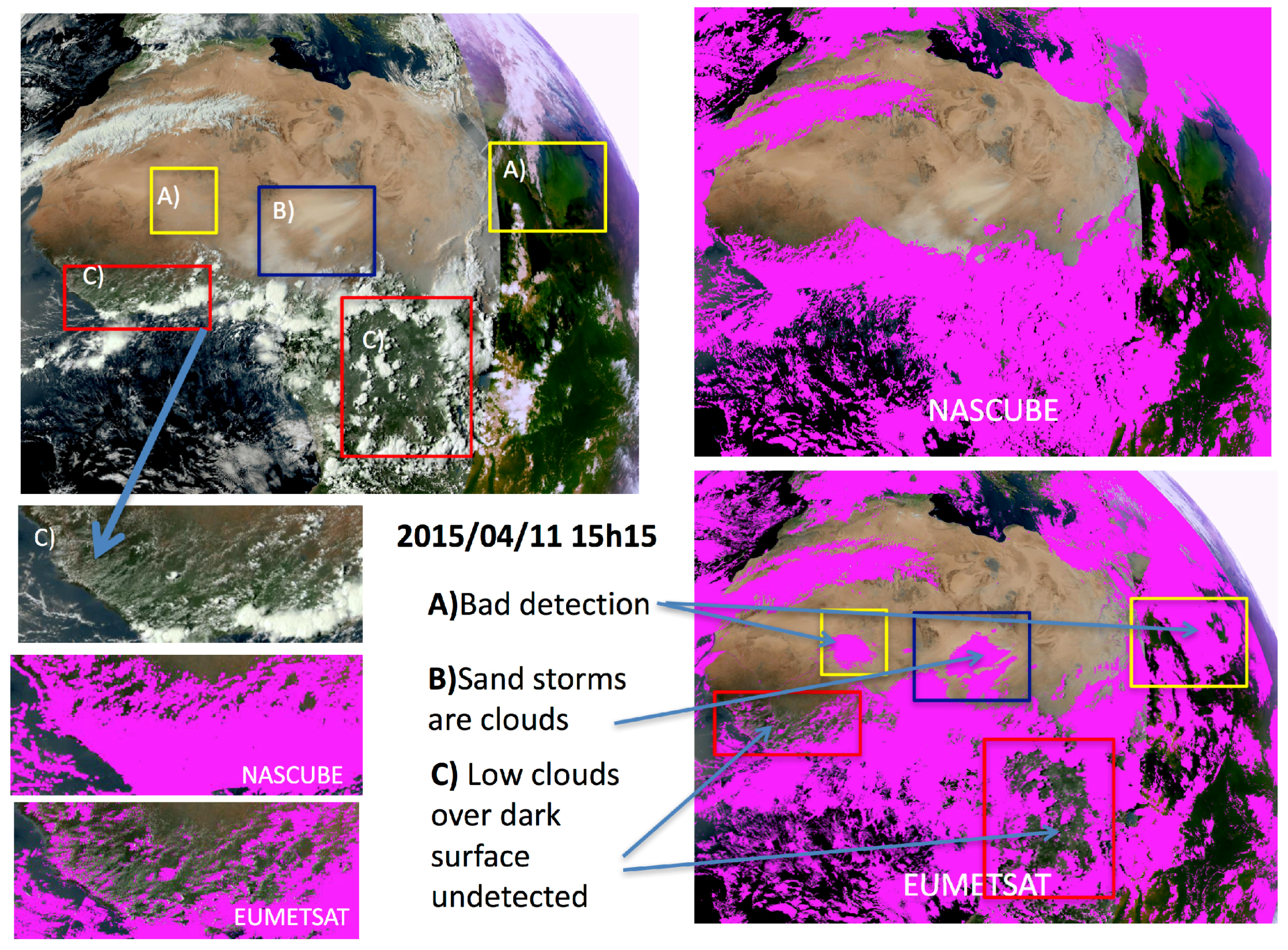
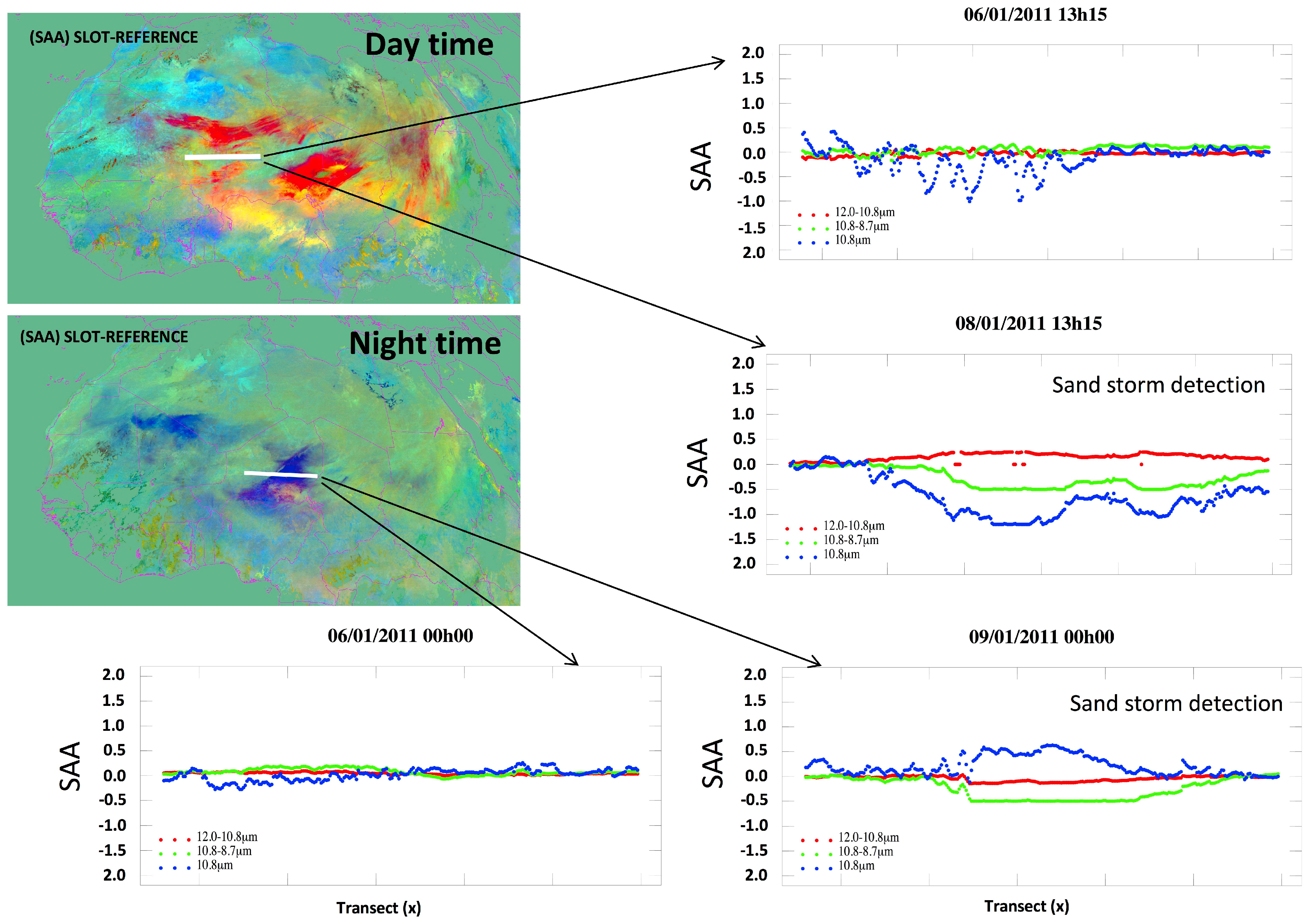
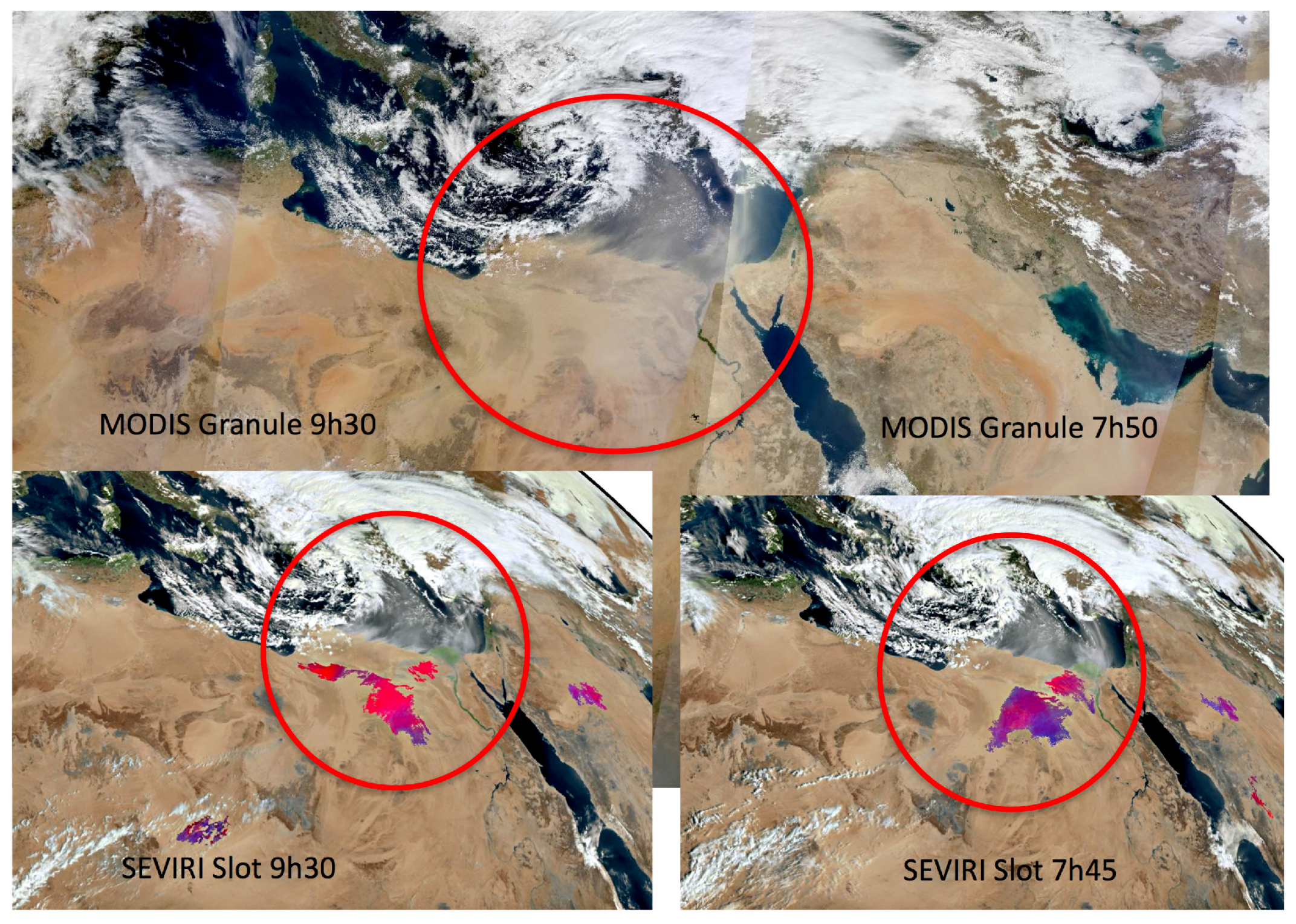
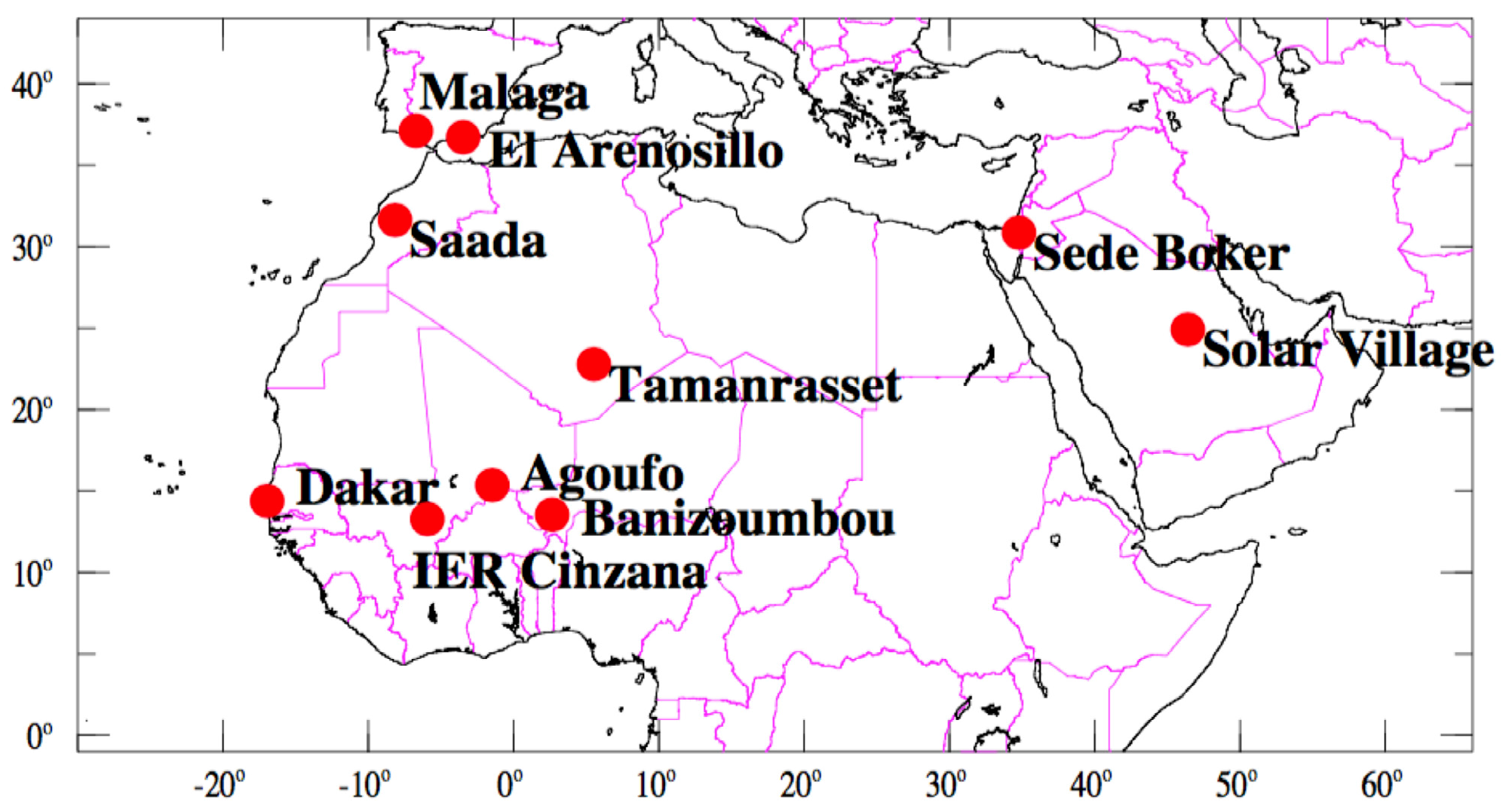
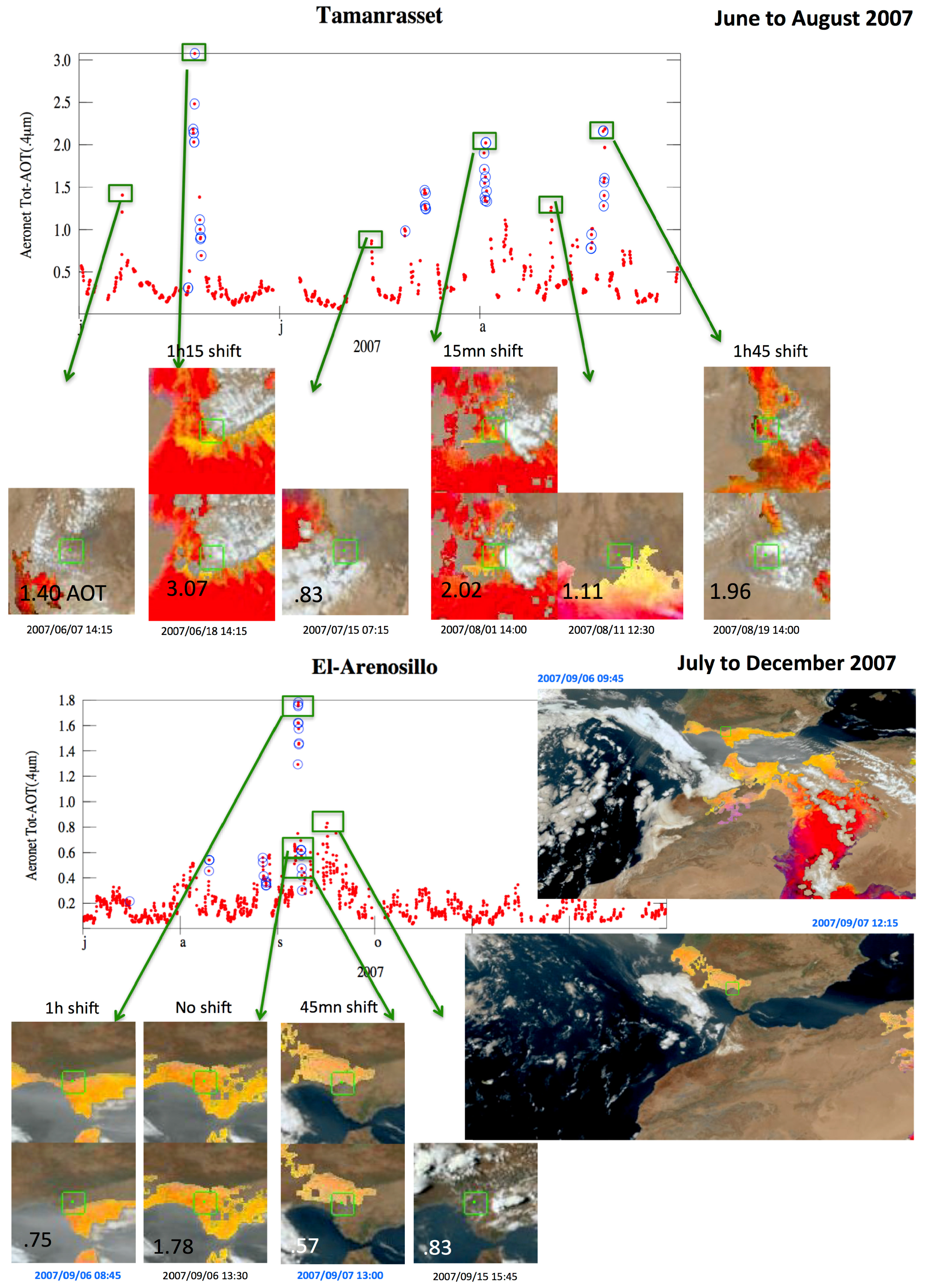
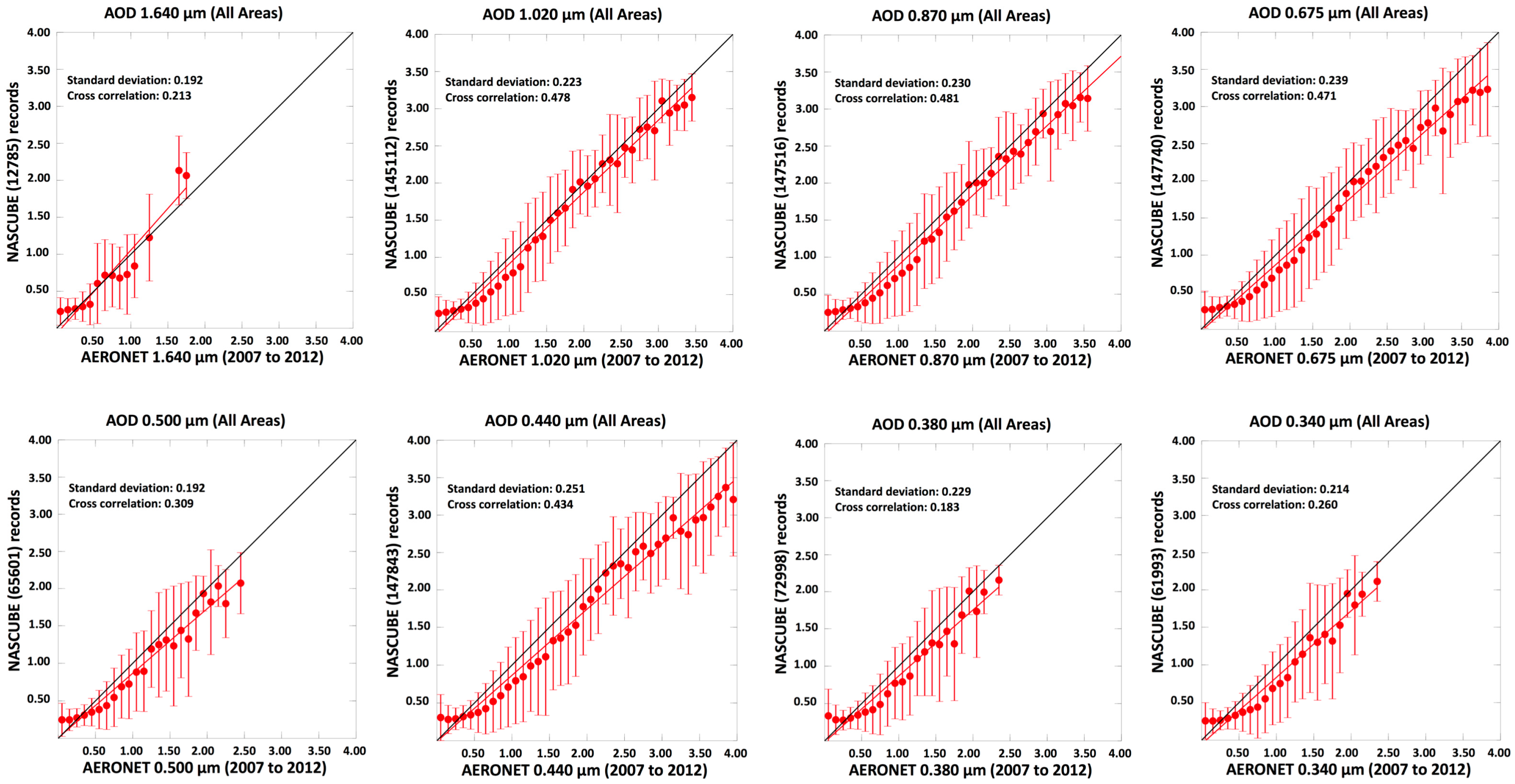
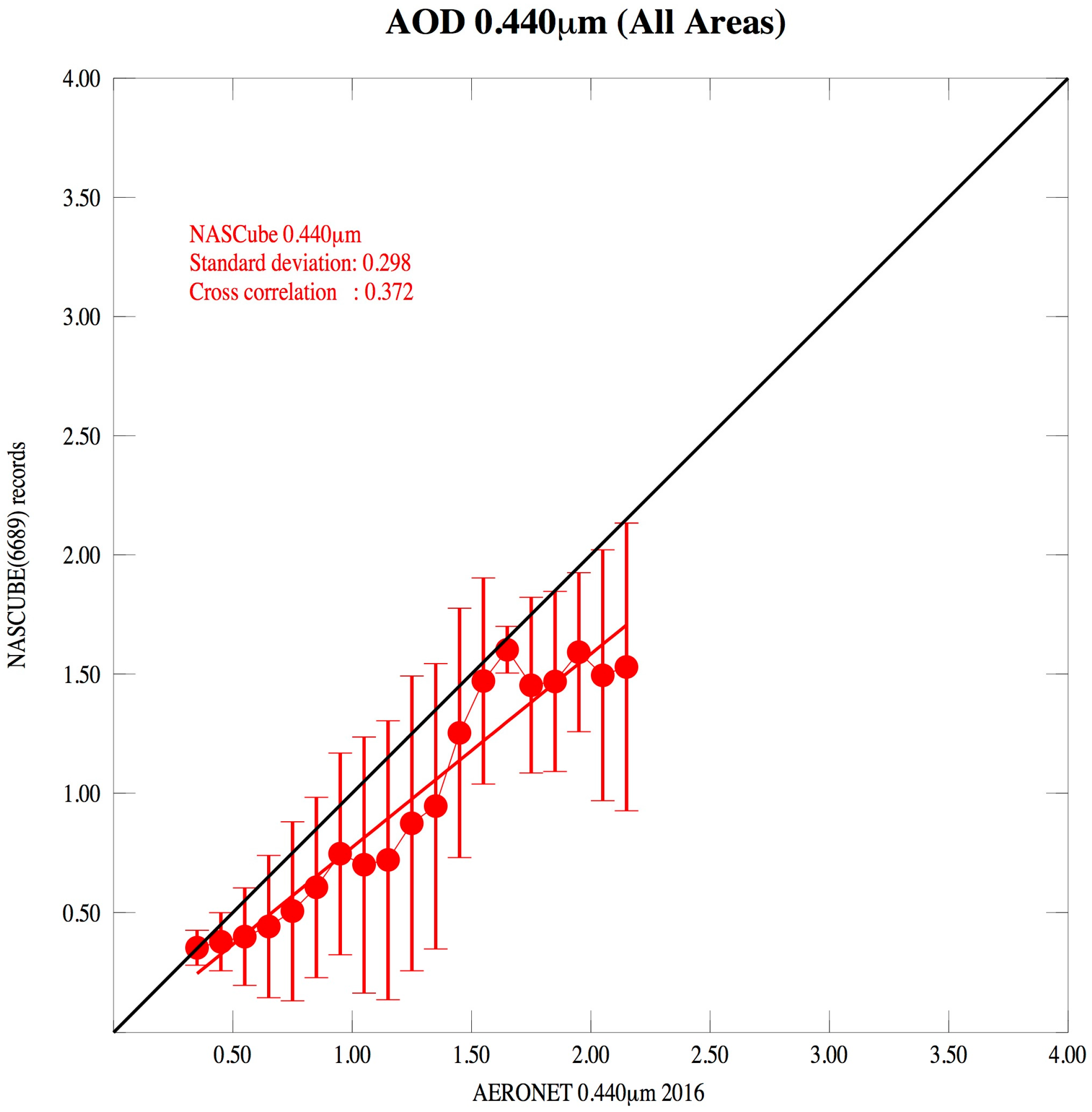
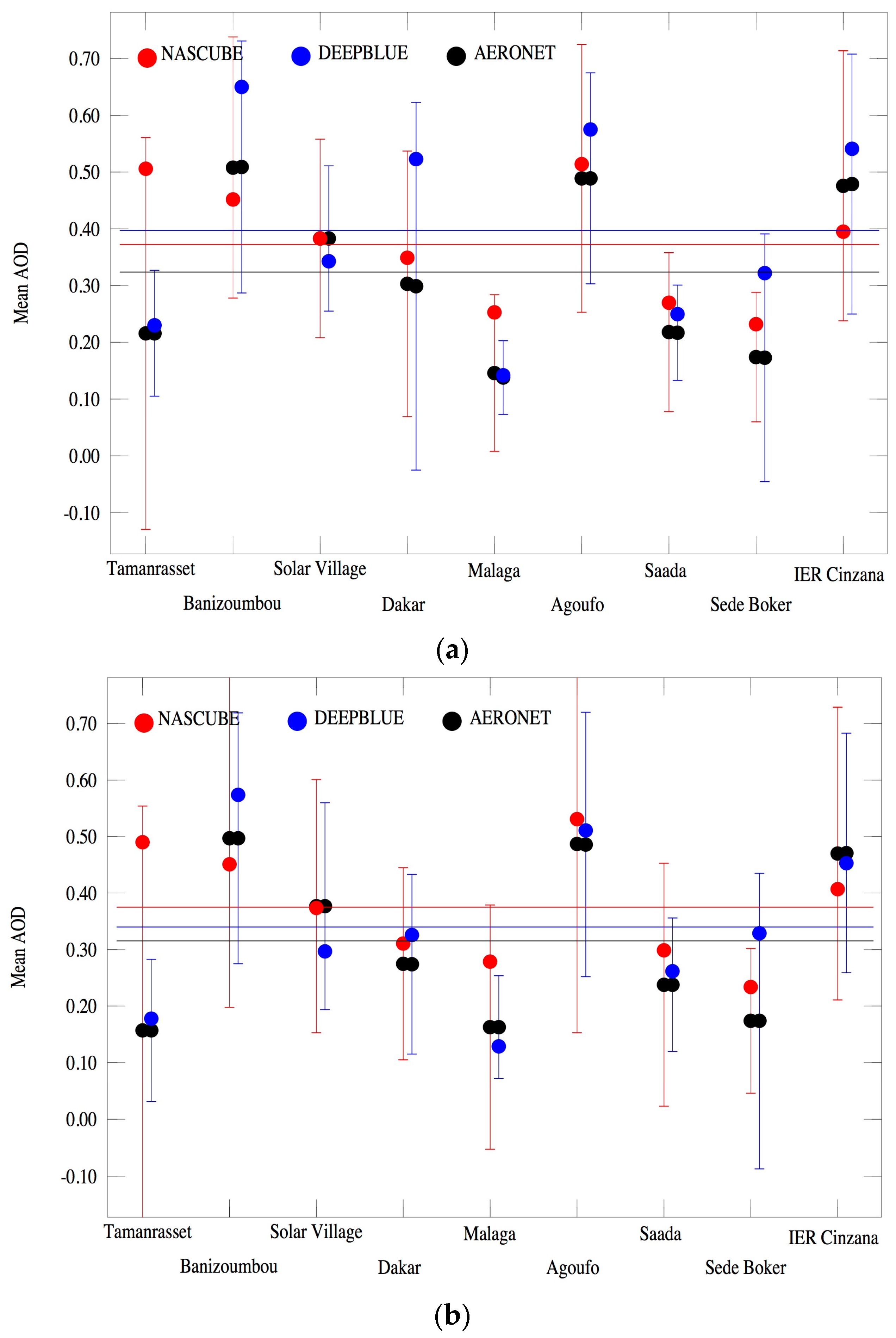
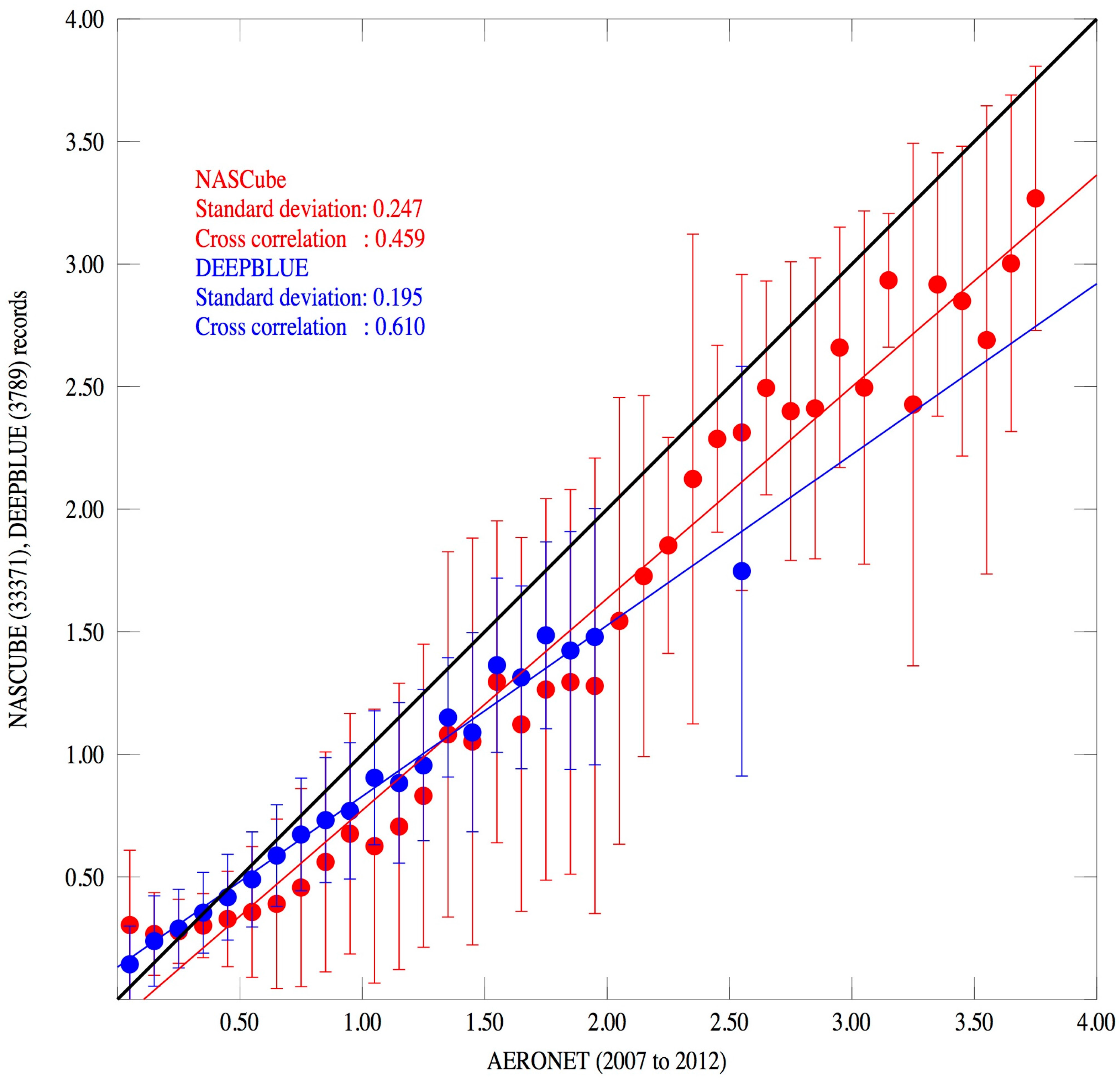
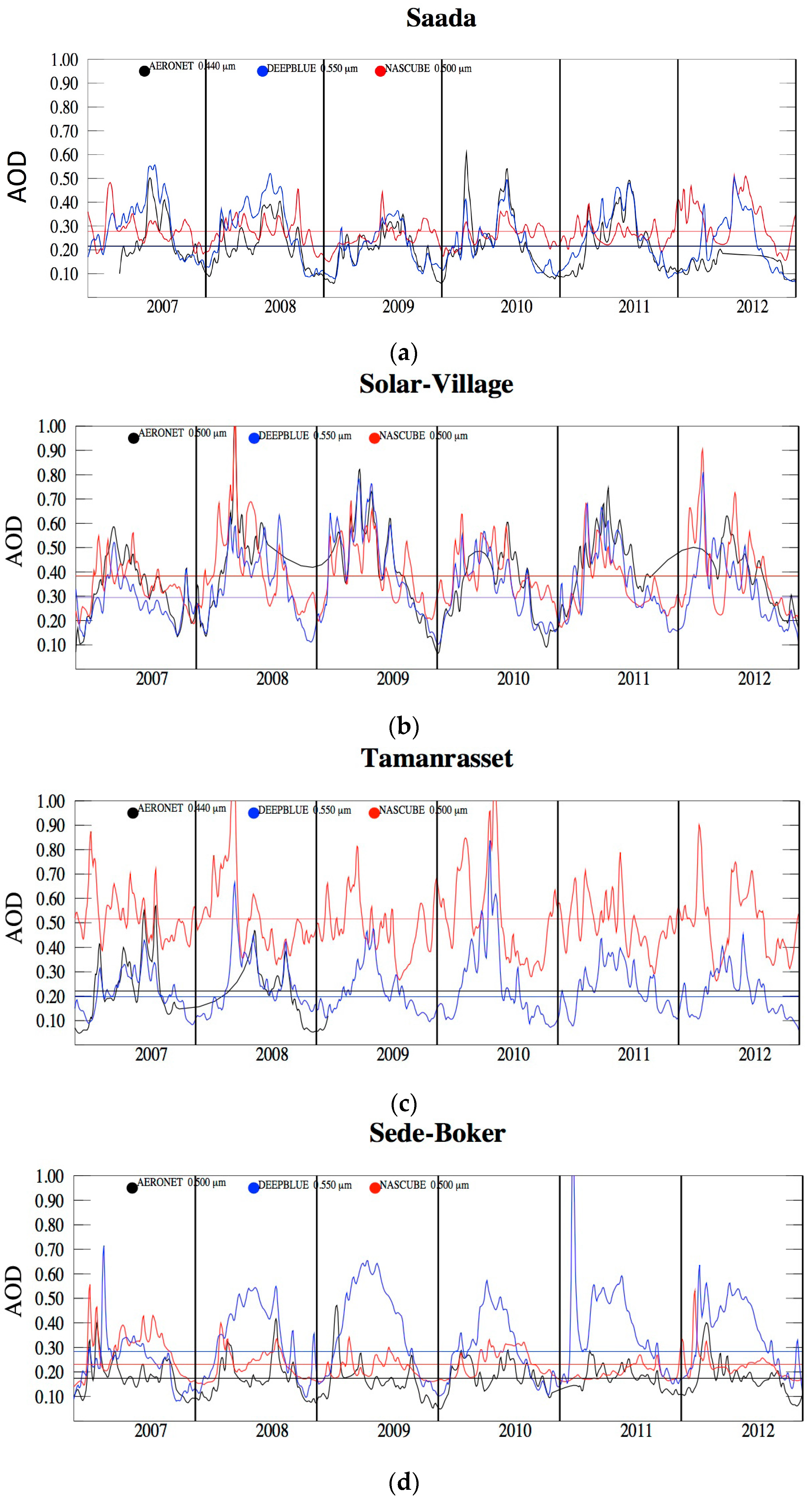
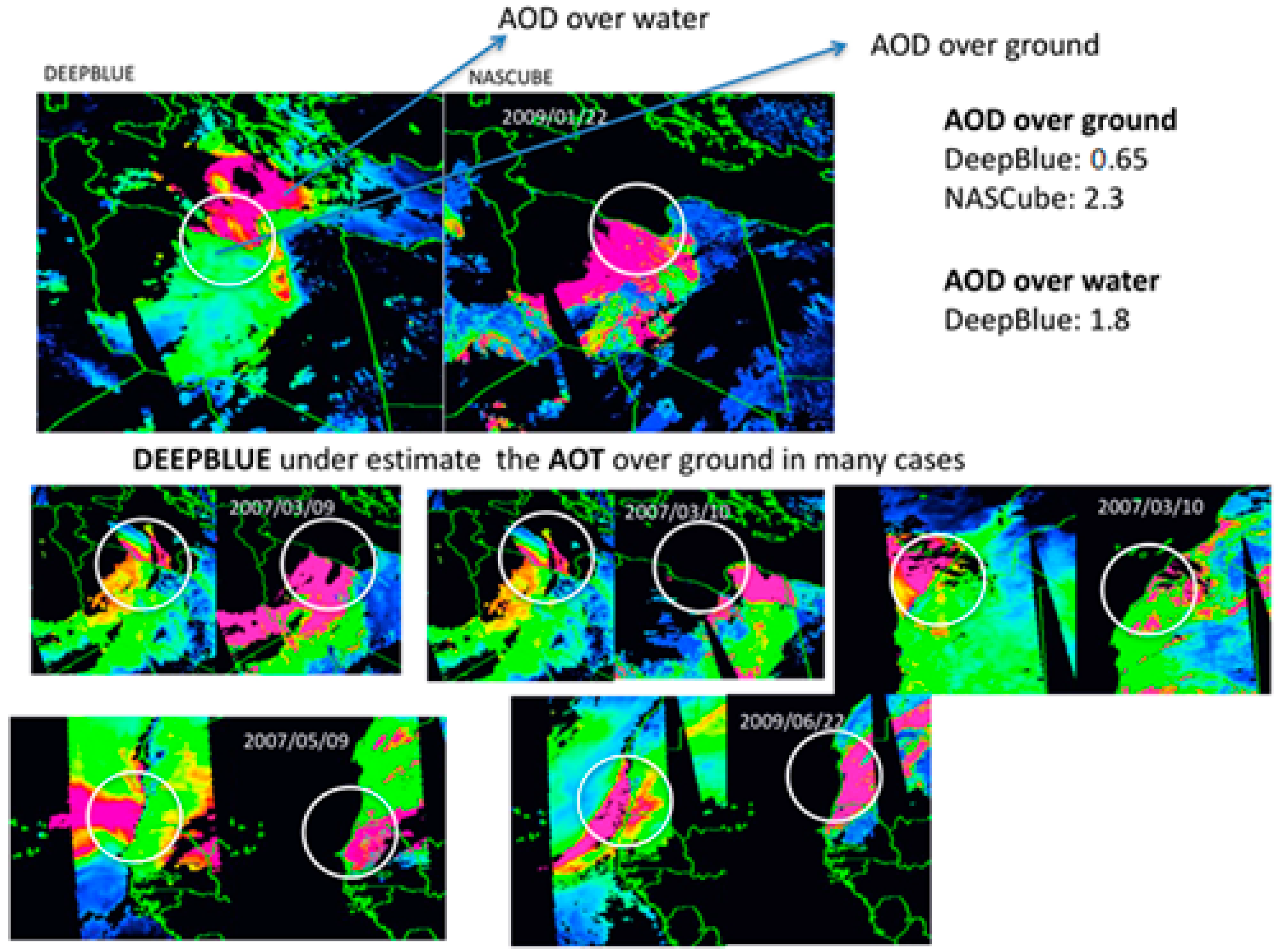
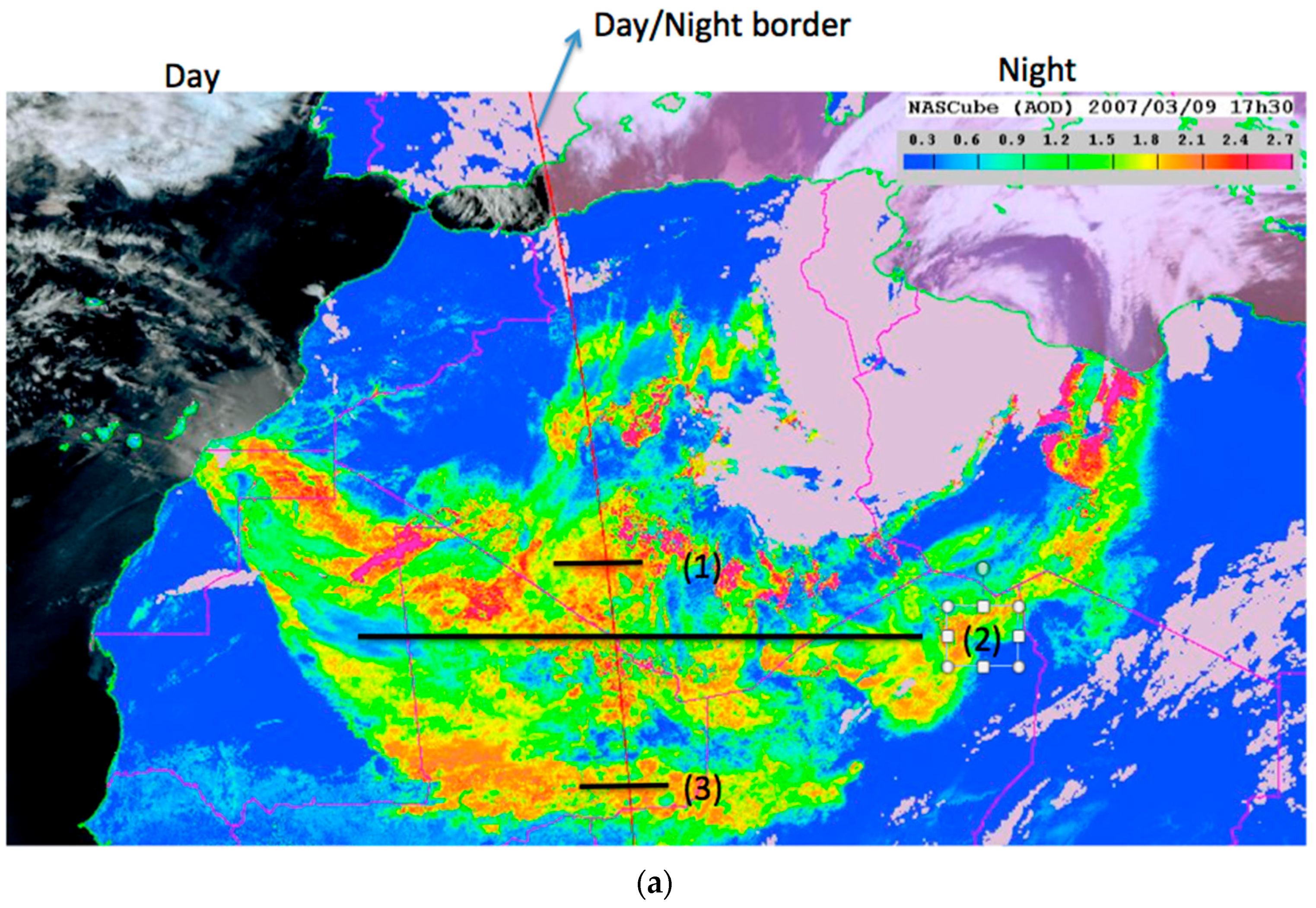

| Band (λi) | PNC Channel | ai | bi | mini | maxi |
|---|---|---|---|---|---|
| 3.9 µm | R | 0.004478 | 1.308425 | 7.5 | 9.5 |
| 8.7 µm | G | 0.001732 | 1.247040 | 7.7 | 9.5 |
| 9.7 µm | B | 0.003362 | 1.899304 | 7.5 | 9.5 |
© 2017 by the authors. Licensee MDPI, Basel, Switzerland. This article is an open access article distributed under the terms and conditions of the Creative Commons Attribution (CC BY) license (http://creativecommons.org/licenses/by/4.0/).
Share and Cite
Gonzalez, L.; Briottet, X. North Africa and Saudi Arabia Day/Night Sandstorm Survey (NASCube). Remote Sens. 2017, 9, 896. https://doi.org/10.3390/rs9090896
Gonzalez L, Briottet X. North Africa and Saudi Arabia Day/Night Sandstorm Survey (NASCube). Remote Sensing. 2017; 9(9):896. https://doi.org/10.3390/rs9090896
Chicago/Turabian StyleGonzalez, Louis, and Xavier Briottet. 2017. "North Africa and Saudi Arabia Day/Night Sandstorm Survey (NASCube)" Remote Sensing 9, no. 9: 896. https://doi.org/10.3390/rs9090896
APA StyleGonzalez, L., & Briottet, X. (2017). North Africa and Saudi Arabia Day/Night Sandstorm Survey (NASCube). Remote Sensing, 9(9), 896. https://doi.org/10.3390/rs9090896




